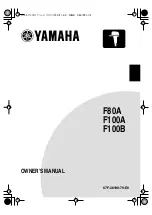
K-series OEM Board User Guide
16
Log rtcm1b ontime 1 //Differential GPS Corrections
Log rtcm31b ontime 1 //Differential GLONASS Corrections
Log rtcm59bdsprcb ontime 1 //Differential Beidou Corrections
Saveconfig //save configuration
Tip: RTCM59bdsprcb message is defined by ComNav Technology, which may be incompatible
with rover receiver of other brand.
For the Rover:
rtkobsmode 3 //Set the observation mode of rover receiver
Log comX gpgga ontime 1 //comX output GPGGA data
Interfacemode comX auto auto on //config comX to detect RTCM corrections
Saveconfig //save configuration
Output GPGGA message to check if OEM board in RTD mode, solution status is “E, 2”.
$GPGGA,015101.00,3121.0000551,N,12117.5483125,E,2,23,1.1,37.2598,M,0.000,M,
02,0004*58
4.5. Moving base mode
Different from the stationary base station, the moving base station transmits
corrections to the rover when it’s moving. Therefore, it should set without a fixed
position through the “
Fix none
” command. There are mainly two types of moving
base mode shown below:
4.5.1 Moving base station
The moving base function allows you to obtain a centimeter-level xyz baseline
estimate when the base station and rover are moving, which means the rover can
only get accurate relative position based on the base. In this mode, the rover should
be set as synchronous mode due to the latency of the reference station position
message. Moreover, the moving base can accept the external high accuracy NMEA
input, for example from another GNSS station with absolute high precision; then
transmit to the rover, refer to chapter 6.4 in
ComNav OEM Board Reference
Manual_V1.5
for detailed information.









































